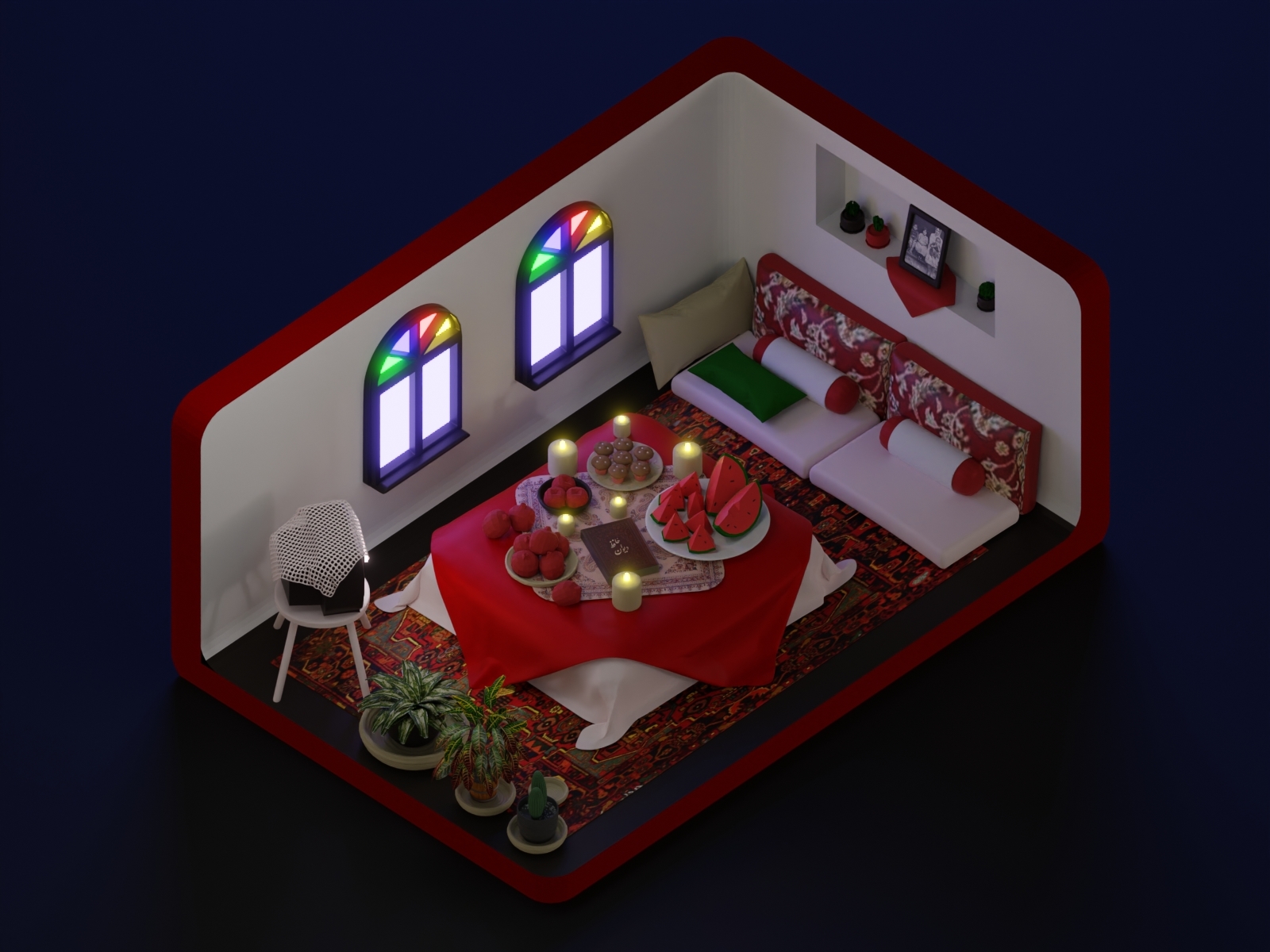In Persian culture, Yalda Night is a magical celebration that marks the winter solstice, the longest and darkest night of the year. For years, we have been fascinated by the captivating traditions and rituals associated with this special night. Through extensive analysis and research, we have curated this comprehensive guide to help you understand the profound cultural significance of Yalda Night and its enduring legacy.
| Name | Yalda Night |
|---|---|
Now, as we have gathered all the key fundamental details about Yaldā Night: The Longest And Most Celebrated Night In Persian Culture, we can the proceed to the main details to understand it clearly.
FAQ
Yaldā Night, the longest and most celebrated night in Persian culture, holds great significance in Iranian tradition. Here are some frequently asked questions and their answers to help you understand its history and observances:

Day 4: Yaldā Night - A Bitter Spirit - Source www.abitterspirit.com
Question 1: What is the historical significance of Yaldā Night?
Yaldā Night, also known as Shab-e Yaldā, marks the winter solstice, the night when the Earth's axis is tilted away from the sun, resulting in the shortest day and longest night of the year. In ancient Persia, it symbolized the triumph of light over darkness.
Question 2: How is Yaldā Night traditionally celebrated?
Yaldā Night is a time for family and friends to gather, recite poetry, tell stories, and enjoy traditional foods, including pomegranates, nuts, and dried fruit. The evening often includes music, dancing, and the sharing of gifts.
Question 3: What are some of the customs and beliefs associated with Yaldā Night?
Yaldā Night is believed to be a night of fortune and good luck. It is customary to stay awake all night long, as it is said to bring blessings and ward off evil spirits. People also light bonfires and play games to symbolize the triumph of light.
Question 4: How is Yaldā Night celebrated in modern times?
While the traditional observances of Yaldā Night remain, it has also evolved to include modern elements. The night is often celebrated with parties and gatherings, and many people share photos and updates on social media using the hashtag #YaldaNight.
Question 5: What is the significance of pomegranates and dried fruit in Yaldā Night celebrations?
Pomegranates are a symbol of fertility and abundance in Persian culture, and they are often eaten on Yaldā Night to bring good luck and prosperity. Dried fruit, such as walnuts, almonds, and pistachios, represent longevity and health.
Question 6: How can I learn more about Yaldā Night and its traditions?
There are many resources available to learn more about Yaldā Night, including books, articles, and websites. You can also Yaldā Night: The Longest And Most Celebrated Night In Persian Culture for an in-depth exploration of its history and significance.
The celebration of Yaldā Night continues to hold great importance in Persian culture, symbolizing the resilience and hope of the Iranian people. It is a night of joy, togetherness, and the anticipation of the brighter days to come.
Discover more about Persian culture and traditions by exploring the related articles below.
Tips
For those celebrating Yaldā Night, it is important to make sure that all preparations are made in advance. This includes ensuring that you have enough food and drinks for all your guests, as well as any necessary decorations. Here are a few tips to help make your Yaldā Night celebration a success:
Tip 1: Prepare the food and drinks in advance.
One of the most important aspects of Yaldā Night is the food. Traditionally, a variety of dishes are served, including fruits, nuts, and sweets. It is also common to serve a warm drink, such as tea or coffee. If you are hosting a large gathering, it is best to prepare all of the food and drinks in advance. This will help ensure that your guests have plenty to eat and drink throughout the night.
Tip 2: Set up the decorations.
Yaldā Night is a time to celebrate the beauty of the winter solstice. As such, it is common to decorate your home with bright colors and lights. You can also use natural elements, such as pine cones and holly, to create a festive atmosphere.
Tip 3: Invite your friends and family.
Yaldā Night is a time to spend with loved ones. Be sure to invite your friends and family to join you for the celebration. You can also share stories, sing songs, and play games.
Tip 4: Light a fire.
In ancient Persia, it was believed that fire had the power to ward off evil spirits. As such, it is common to light a fire on Yaldā Night. You can use a fireplace, a bonfire, or even a simple candle.
Tip 5: Stay up all night.
Yaldā Night is the longest night of the year. As such, it is traditional to stay up all night to celebrate. You can talk, laugh, and tell stories until the sun rises.
By following these tips, you can ensure that your Yaldā Night celebration is a memorable one. This is a special time to gather with loved ones, celebrate the winter solstice, and enjoy the beauty of the night.
Yaldā Night is a beautiful and important tradition that has been celebrated for centuries. By following these tips, you can make sure that your celebration is a success.
Yaldā Night: The Longest And Most Celebrated Night In Persian Culture
Yaldā Night, also known as Shab-e Yaldā, is an ancient Persian festival celebrated on the winter solstice. It is a night of great significance, steeped in cultural traditions and rituals that have been passed down through generations. The following key aspects offer a deeper insight into this unique celebration:
- Longest Night: Yaldā marks the longest and darkest night of the year, symbolizing the triumph of light over darkness.
- Family Gathering: It is a night for families to gather around the korsi (a traditional heating appliance) and bond over shared stories, poetry, and laughter.
- Mezze and Fruits: A variety of dried fruits, nuts, and sweets are enjoyed, including pomegranates, walnuts, and watermelon.
- Divination: Yaldā is associated with ancient practices of fortune-telling and divination, including the interpretation of dreams.
- Fire and Light: Bonfires are lit to ward off evil spirits and symbolize the warmth and hope of the approaching spring.
- Poetry and Storytelling: The night is filled with recitations of poetry, especially the epic poem Shahnameh by Ferdowsi, and traditional storytelling.
These key aspects intertwine to create a rich tapestry of cultural heritage and shared experiences. Yaldā Night is a time for reflection, celebration, and the renewal of hope as the winter solstice gives way to the promise of spring.

Happy Yaldā Night! by Negatris on Dribbble - Source dribbble.com

Yalda Night: The bright feast in the longest and darkest night of the - Source sites.centri.univr.it
Yaldā Night: The Longest And Most Celebrated Night In Persian Culture
Yaldā Night holds a special place in Persian culture, being the longest night and widely celebrated with a plethora of traditions. It connects Persians to their ancient heritage and deepens the bond between family and friends. Yaldā symbolizes hope and resilience, a beacon of light amidst the darkness of winter.

Yalda night Shabe Yalda ("Yalda night" Persian: Ŝabe Yaldā) is an - Source www.pinterest.co.uk
This special night is believed to have originated from the pre-Islamic Zoroastrian beliefs. Zoroastrians saw the winter solstice as a victory of good over evil, with the increasing daylight representing Ahura Mazda's triumph over Ahriman, the devil. Yaldā was a night of celebration and feasting, much like the modern-day traditions.
The centrality of Yaldā Night in Persian culture stems from its historical and religious significance. It has been a time for families to gather, share stories, recite poetry, and eat traditional foods for centuries. The night also marks the beginning of winter, a time of reflection and preparation for the coming year.
Yaldā Night continues to be a vibrant and significant part of Persian culture, providing a unique glimpse into its rich history and traditions. By understanding its origins and importance, we can appreciate the enduring legacy of this special occasion and the cultural tapestry it weaves.
Conclusion
Yaldā Night stands as a testament to the enduring power of Persian culture and its ability to connect people across generations. It is a night of celebration, reflection, and cultural preservation that continues to inspire wonder and appreciation in the hearts of Persians worldwide.
As the longest and most celebrated night in Persian culture, Yaldā reminds us of the importance of family, community, and tradition. Its significance extends beyond the boundaries of Iran, resonating with anyone who values the beauty of cultural heritage and the enduring spirit of humanity.
